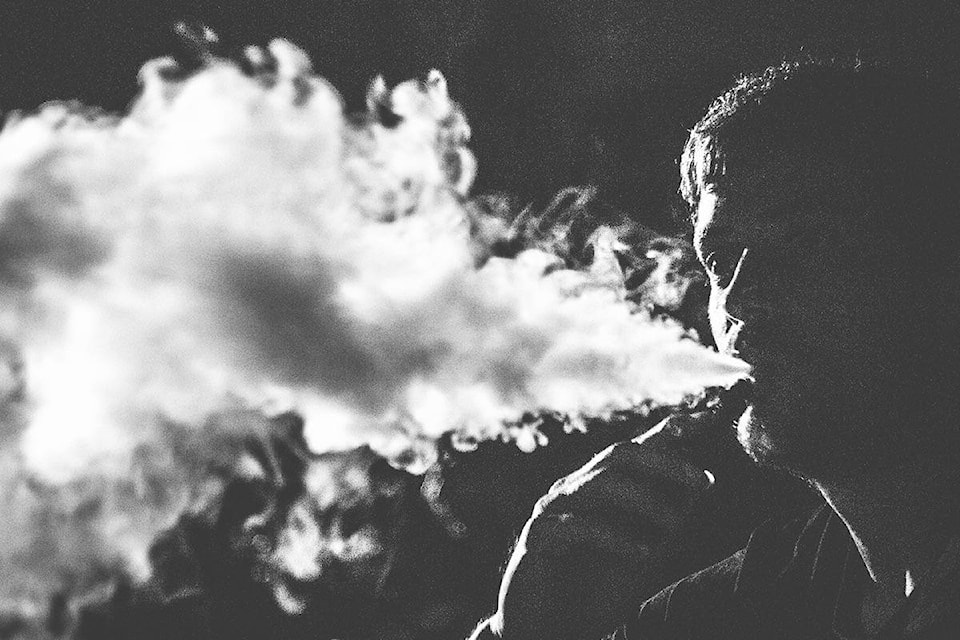As vapers become smaller and more discrete - in some cases “fashionable” - it’s becoming increasingly difficult for school leaders to confiscate this particular inhalant paraphernalia from students.
“Now they’ve got a quick little jewel,” Principal Aaron McKenzie, from JL Crowe, explained. “It looks like a necklace, you would not think it was anything but a pendant. But it is a vape. You just put it up to your mouth for a quick hit.”
Many years ago, it was the BC Ministry of Health that implemented tobacco-free zones, including the regulation that smoking would no longer be permitted on high school campuses. This rule now covers cigarette smoking, vaping, and any other smoking-related substance as well.
“Vaping material is taken away if you are caught vaping on school property or inside the school,” McKenzie clarified. “It’s not a situation where everyone is being searched coming through the door. It’d be like seeing a cigarette behind the ear - ‘I will take that from you now.’”
The Trail Times contacted McKenzie in light of the Central Okanagan School District recently announcing that their principals would be confiscating vaping products they see on campus as part of a crack down to stop students from inhaling potentially dangerous substances on school property.
This has been the practice at the Trail high school for years, though vaping is much more prevalent than cigarette smoking ever was - and the vaping products are constantly evolving into smaller devices that pack big doses of nicotine.
“We’ve been struggling with the vaping thing for a long time, just like in the past with any smoking-related paraphernalia, it is considered unsafe, so it is confiscated,” McKenzie said. “Cigarettes are just so rare now. I am not sure, but maybe five per cent of the kids who are actually in the designated off-school site space would have a cigarette in their hand, it’s all vaping.”
District surveys have revealed that 80 to 90 per cent of students in grade 8 and 9 have admitted to being regular vapers or have tried it numerous times, said McKenzie.
“It is not a certain ‘subgroup,’ it is dancers, athletes, team sports guys, it is totally throughout (the student body),” he added.
“There is no way, in the day of cigarettes, that would be the statistic.”
Vaping involves inhaling from an electronic cigarette or e-cigarette, which is a handheld battery-powered vaporizer that simulates smoking. The device provides some of the behavioral aspects of smoking like the hand-to-mouth action of smoking, but without burning tobacco.
Using an e-cigarette is known as “vaping” and the user is referred to as a “vaper.” Instead of cigarette smoke, the user inhales an aerosol, commonly called vapor. E-cigarettes typically have a heating element that atomizes a liquid solution called e-liquid, or vape “juice,” which usually contains propylene glycol, glycerin, nicotine, flavorings, additives, and differing amounts of contaminants.
Because the level of nicotine or “juice” can be modified into very high doses, vaping can be particularly dangerous in the hands of teenagers.
“That natural addictive quality is really high, especially if you are jumping into this as a teen during a growth spurt,” said McKenzie. “So we have some kids really struggling to quit … because they are up to such high nicotine … they could be getting half a pack of cigarettes-worth of nicotine in just one or two inhales.”
Education about the perils of smoking and vaping is ongoing at the high school. McKenzie says respective lessons are taught in science, PE, and career/life education classes. Instructors talk about it at grade-wide meetings, and the topic is touched on in homebound newsletters.
The negative traction vaping is now getting in the media is a good thing as well.
“The real drag is that, in the past, there’s been a lot of parents who have not supported us with (the message) that this is a real concern,” said McKenzie. “Now I think with the sickness and death being reported, we can now go, “Look, you do not want to be in this vapor cloud.’”
In Canada, similar to tobacco products, it is illegal to buy and sell e-cigarettes and vaping supplies to anyone under the age of 19.
The Times contacted the school district for additional comment but did not hear back by press time.
